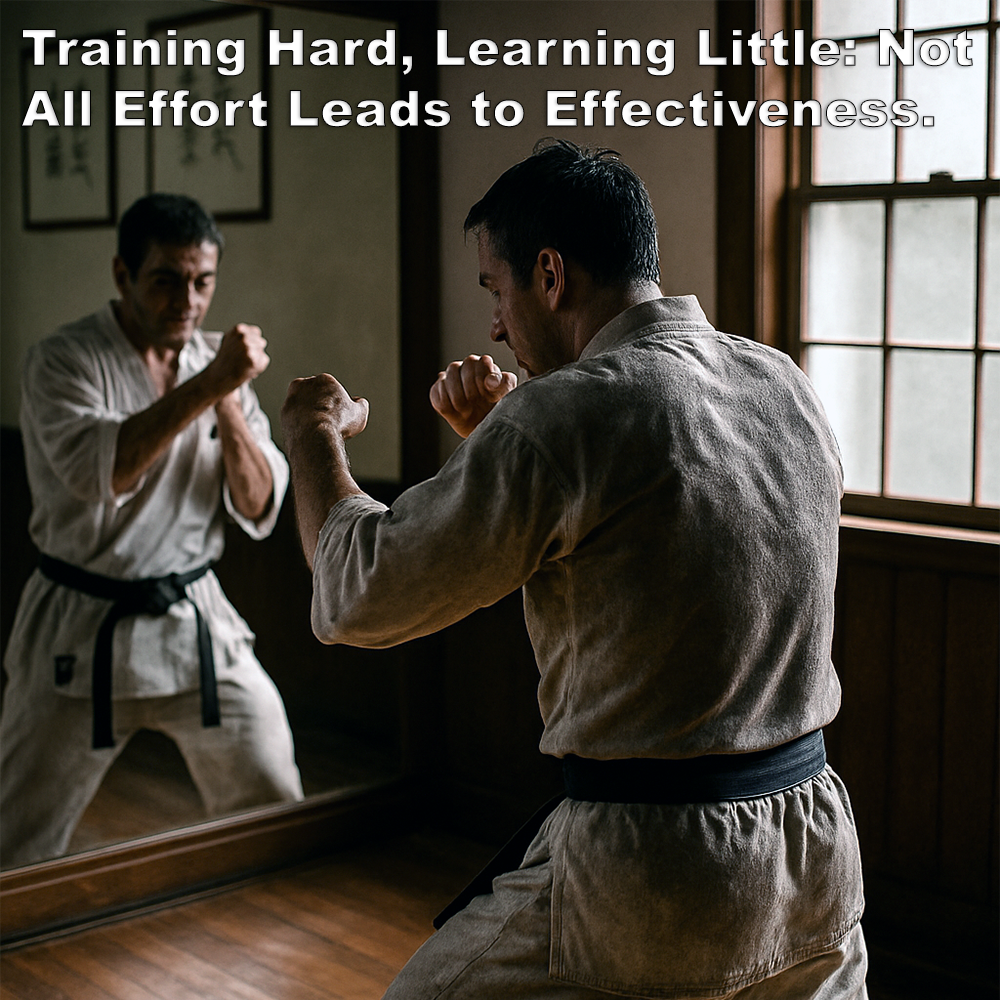
(Approx 2 minute 40 second read)
The dojo, it should make you sweat and demand discipline – but what about when the instructor truly believes they’re teaching the pinnacle of self-defense, yet their methods fall painfully short in real-world violence?
.
Some dojo pride themselves on intensity. Students train hard, push limits, and earn their ranks through effort. It feels meaningful. But hard work doesn’t always equal depth. In fact, it can often hide the lack of it.
.
Instructors in these environments often don’t see themselves as doing anything wrong. But without realizing it, they may be guiding students down a path that looks authentic while lacking the critical elements that make training truly functional under pressure.
.
Some might call it the Dunning–Kruger effect – overconfidence without depth. But this is more about their single-minded belief.
.
That’s what makes it so hard to spot. When there’s structure, sweat, and discipline, students naturally feel like they’re progressing, creating a powerful illusion of competence.
.
But you can work yourself to exhaustion and still not be learning anything useful for dealing with the unpredictable nature of violence.
.
Perhaps the problem stems from having only trained under instructors who themselves never tested their methods against live, resisting opponents. It becomes a closed loop, a self-reinforcing belief system.
.
You might see instructors who may believe their methods are so superior, that they don’t require real-world testing. And their students, who work hard and believe deeply, internalize this message.
.
But what happens when those rehearsed techniques meet an uncooperative attacker?
.
This is where the danger lies. Without context, without pressure, and without a foundation built on adaptability and realism, training becoming hollow.
.
Students might walk away with fitness, confidence, and discipline, but they’re often left with a false sense of security when it comes to real self-defense.
.
True self-protection isn’t about memorizing techniques or sparring in a controlled setting.
.
It’s about being able to apply skills under pressure – when the opponent is resisting, when the environment is unpredictable, and when nothing goes as planned.
.
Training needs to reflect this reality. Techniques should be pressure-tested in realistic scenarios, not just performed in compliance. Students need experience across different ranges – striking, grappling, on the ground, and dealing with weapons.
.
They should be encouraged to think critically, to ask whether what they’re doing would work when someone is trying to seriously hurt them. And just as importantly, training should include an understanding of self-awareness and de-escalation, because real self-defense often begins long before any physical contact.
.
I was teaching at someone else’s dojo a little while ago, and one student – a very overweight guy who clearly struggled with mobility – told me, “I’ll just fight and use my weight against them.”
.
He genuinely believed that his size was enough. In his mind, his weight and his fight first mentality, was all he needed.
.
That’s why I always come back to this: effort is vital, but direction matters more. Without direction, it’s just hard work for its own sake. Sweat, intensity, and dedication are admirable – but they need to be guided by realism.
.
If you’re a student looking to develop real-world self-defense skills, it’s worth asking yourself some honest questions.
.
Is your training grounded in reality? Are your techniques tested under pressure? Do you understand how to adapt when things don’t go to plan? And does your instructor welcome those questions, or avoid them?
.
Ultimately, belief in a system isn’t enough. Effectiveness requires humility, scrutiny, and a willingness to evolve. Because in the real world, it’s not just about how hard you train – it’s about whether your training prepares you for what’s real.
.
.
Written by Adam Carter
